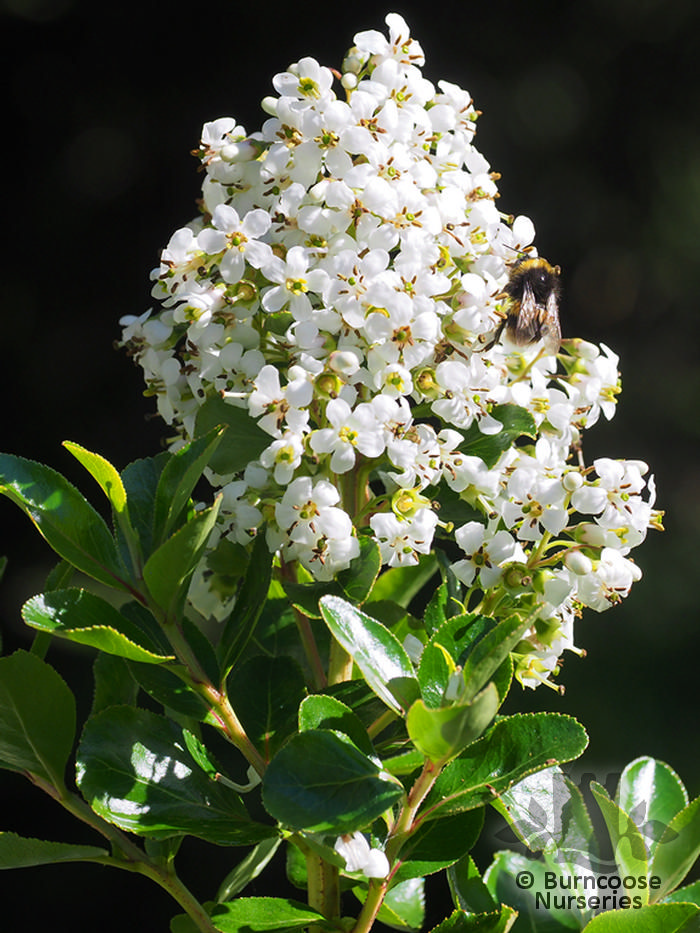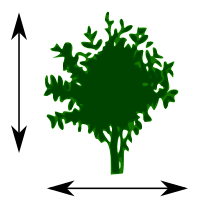ESCALLONIA 'Iveyi'

<






>
ESCALLONIA 'Iveyi'

BUSH TYPES
The most handsome member of this family, originally raised at Caerhays Castle, with very glossy foliage and waxy white flowers
Full Plant Details - Sun/Soil & other attributes
-
Floweringlocal_floristJanlocal_floristFeblocal_floristMarlocal_floristAprlocal_floristMaylocal_floristJunlocal_floristJullocal_floristAuglocal_floristSeplocal_floristOctlocal_floristNovlocal_floristDec
-
 Burncoose speciality
See Burncoose Speciality group for more details
Burncoose speciality
See Burncoose Speciality group for more details -
 Good to know
Wildlife plant - insects
Good to know
Wildlife plant - insects -
 Pests & Diseases
None
Pests & Diseases
None -
 Place of origin
South America (raised at Caerhays).
Place of origin
South America (raised at Caerhays). -
Caerhays bred plants
-
EvergreenOval to elliptic, glossy, dark-green leaves to 7cm (3in) long, often bronze-tinted in cold weather.
-
 White
White
-
PaniclesConical panicles 13-16cm (5-6¼in) long and 10cm (4in) wide at the bases
-
BorderSuitable for a shrub border
-
Fully hardy
-
 Serrulate
Serrulate
-
 Elliptic
Elliptic
-
 Height
3m (10ft)
Height
3m (10ft) -
 Spread
3m (10ft)
Spread
3m (10ft) -
Tall ShrubUpright shrub. Chalice-shaped flowers to 1cm (½in) across
-
 Pruning group 6
Suitable for: Evergreen shrubs or climbers that need little to no pruning.
Pruning group 6
Suitable for: Evergreen shrubs or climbers that need little to no pruning.
Action: Trim back shoots that spoil symmetry and to fit available space.
When: Annually after flowering if on previous year's growth, or in later Winter or Spring if flowering on current year's growth, or as requires.
-
 Hardy - average winter
Hardy through most of the UK apart from inland valleys, at altitude and central/northerly locations. May suffer foliage damage and stem dieback in harsh winters in cold gardens. Plant can withstand temperatures down to -10°C (14°F)
Hardy - average winter
Hardy through most of the UK apart from inland valleys, at altitude and central/northerly locations. May suffer foliage damage and stem dieback in harsh winters in cold gardens. Plant can withstand temperatures down to -10°C (14°F) -
Scented flowers
-
Scented foliageEmits a pleasant fragrance, especially after rain
-
Autumn Seasonal Interest
-
Spring Seasonal Interest
-
Summer Seasonal Interest
-
Winter Seasonal Interest
-
Fertile well drained soil
-
 Full sun
Shelter from cold winds.
Full sun
Shelter from cold winds. -
 Bee friendly
Bee friendly
-
Rabbit Resistant
-
Mature Size3m (10ft)


3m (10ft)
View Detailed Plant Description
View Planting Tips and Care Advice
Cold weather damage to evergreen plants
Escallonia - Care Guide
Planting to avoid allergic reactions and asthma
View Planting Combinations









